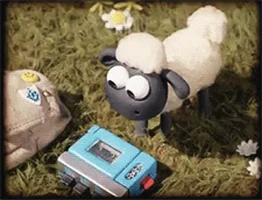Pokénomenon

Over the course of several months I had become quietly frantic. Something was off in my relationship, and with every suspicious behavior I observed I became more and more convinced that an infidelity of homewrecking proportions was occurring while I could do little more than sit back and watch. My partner’s once-regular lunchtime calls had become inconsistent, the conversational length dwindling down to just a few minutes’ worth of superficial dialogue. He was always “busy” on his lunch break, or “taking a walk” to “stay healthy.” His evening commutes seemed to take longer. At home, he was distracted – and perpetually on his phone. On the weekends, even his short, simple errands turned into hours away from the house. Heartbroken, I resigned myself to the notion that he’d lost interest. Fearing these uncharacteristic mannerisms were signs of an impending marital apocalypse, I finally addressed my concerns. He laughed at me. He told me that I was being silly and that my worries were for nothing. “A likely story!” I thought – and proceeded to question his highly suspect behaviors, each inquiry minced with my completely flawed interpretation of the disputed event. “Oh honey, I wanted to tell you, but I didn’t want you to get mad,” he finally replied. I knew it! The beginning if the end had arrived. I waited for the bomb to drop; I braced myself as the words came tumbling out of my beloved’s mouth: “I’m not cheating. … I’m … Pokémoning….”
Ah ha! I knew it! … Wait … What?! …. 
Dumbfounded, I stood there like Ricky Ricardo awaiting Lucy’s explanation after one of her shenanigans. “I joined a raid group, honey. And a lot of days during lunch I walk down to the Capitol building to catch Pokémon with my group. It’s awesome! There’s usually like 35-40 people there, all gathered around the Capitol to catch these Pokémon. I get more points in my raid group than I could ever get on my own! Here, I’ll show you.” He proceeded to show me his social media-linked raid group, his in-app friend connections, and his highly developed Pokédex (essentially, the catalog of all the pocket monsters he has caught). He continued to explain to me how he checks his phone frequently for notifications, announcements, and even tweets from his gaming circle. And how he sometimes gets sidetracked on his commutes because he’s catching a “shiny” or an “event special” Pokémon. And how on the weekends he’s so particularly attuned with running grocery errands and trips to the post office because there are Pokéstops scattered all over our little town, “even at the Mifflinburg Buggy Museum and, like, every church in town.” I listened in awe. The mistress I had imagined was no mistress at all, but the global phenomenon known as Pokémon GO!

Although my reputation as the representative “non-gamer” of the household precedes me, I became determined to understand the phenomenon that caused me to fear for the sanctity of my future marriage. Over the next few weeks, my fiancé educated me on the intricacies of Pokémon. I was amazed. Aside from a brief and dysfunctional relationship with a sweet little app known as the Candy Crush Saga (please read “dysfunctional” here as “addicted to the sound of the sugar crush with the same dependent, fierce compulsion that compels some others to commence 12-steps programs”), I have had little experience with mobile gaming. Further, I felt strongly that this Poképursuit was simply a waste of time better spent working, reading, writing, studying, cooking, cleaning, sleeping, or perhaps binge watching Hallmark mystery movies. I cringed to admit that the game possesses a breadth, depth, and appeal that I find fascinating. After reading more about Pokémon’s history and then engaging with texts that lauded its potential for literacy learning, I did the unthinkable: I downloaded the app. 
That was approximately eight hours ago. I am currently a Level 7 Pokémon trainer with 37 … no, wait … caught ‘em … 39 Pokémon in my Pokédex, one of them is even a shiny and one is a “mythical creature” (I thought they all were, but hey, I’m only eight hours in). I went on an afternoon drive with my fiancé and he acquainted me with a bunch of local Pokéstops, Pokégyms, and Pokéraid locations. He also taught me how to catch some of the tougher Pokémon. Now I realize why he takes so long at the grocery store – there were five Pokémon in the supermarket parking lot!

While this intricate Pokénomenon is at least moderately entertaining and rejuvenates my connection with my partner through my participation in an affinity group traditionally situated within his domain of interests, I realize that some may wonder what this type of practice with augmented reality may represent within the field of teaching and learning. As an English instructor perpetually tasked with increasing learner literacies, I both identify and agree with Vazquez’s (2003) observations of these principles identified by Gee:
- Active, Critical Learning Principle
- Design Principle
- Semiotic Principle
- Committed Learning/Practice Principle
- Ongoing Learning Principle
- Situated Meaning Principle
- Intertextual Principle
- Multimodal Principle
- Intuitive Knowledge Principle
- Affinity Group Principle
- Insider Principle
In particular, I endorse the Situated Meaning Principle as it pertains to the development of literacies. Vazquez (2003) describes this effect: “The meanings of signs (words, actions, objects, artifacts, symbols, texts…) are situated in embodied experience. Meanings are not general or decontextualized. Whatever generality meanings come to have is discovered bottom up via embodied experiences.” This constructivist idea translates well into my postsecondary environment, where I endeavor to promote meaningful experience as a means of enhancing information literacy by encouraging students to engage with research material in ways that translate to their unique experiences. Most challenging about this undertaking is the facilitation of learner investment through authentic inquiry.
Pokémon GO is a model for proliferating the kind of authenticity I aim to encourage with my students. By providing a gaming platform that offers both individual progression and community engagement, the app enables growth and analysis through an augmented reality that is simultaneously unique and universal. … Who knows? It may even serve as a catalyst for your relationship to level up.

References:
Sicart, M. (2016). Reality Has Always Been Augmented: Play and the Promises of Pokémon GO.
Vazquez, V. & Smith, K. (2003). What Pokémon Can Teach Us About Learning and Literacy.
Williamson, D. (2016). Five Things Education Technology Could Learn from Pokémon Go.

For Further Reading:

“Digital Life is Real – More Exciting Than Pokemon Go” | Dato’ Wei Chuan Beng
On the Determinants and Outcomes of Passion for Playing Pokémon Go
Pokemon Go players are happier, friendlier, study finds
The Praise and Price of Pokémon GO: A Qualitative Study of Children’s and Parents’ Experiences


Always serve too much hot fudge sauce from Chick Fil A menuon hot fudge sundaes.
It makes people overjoyed, and puts them in your debt.